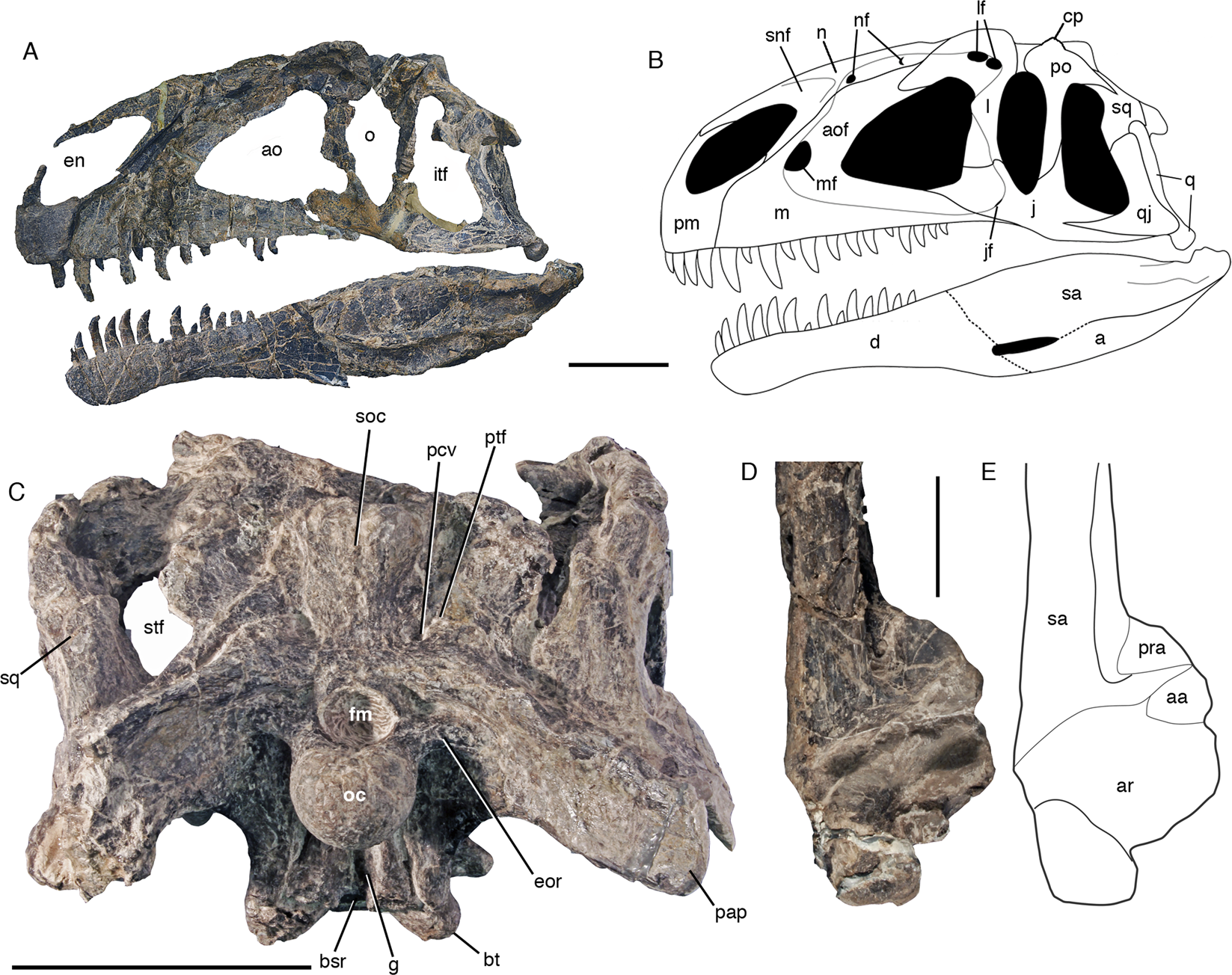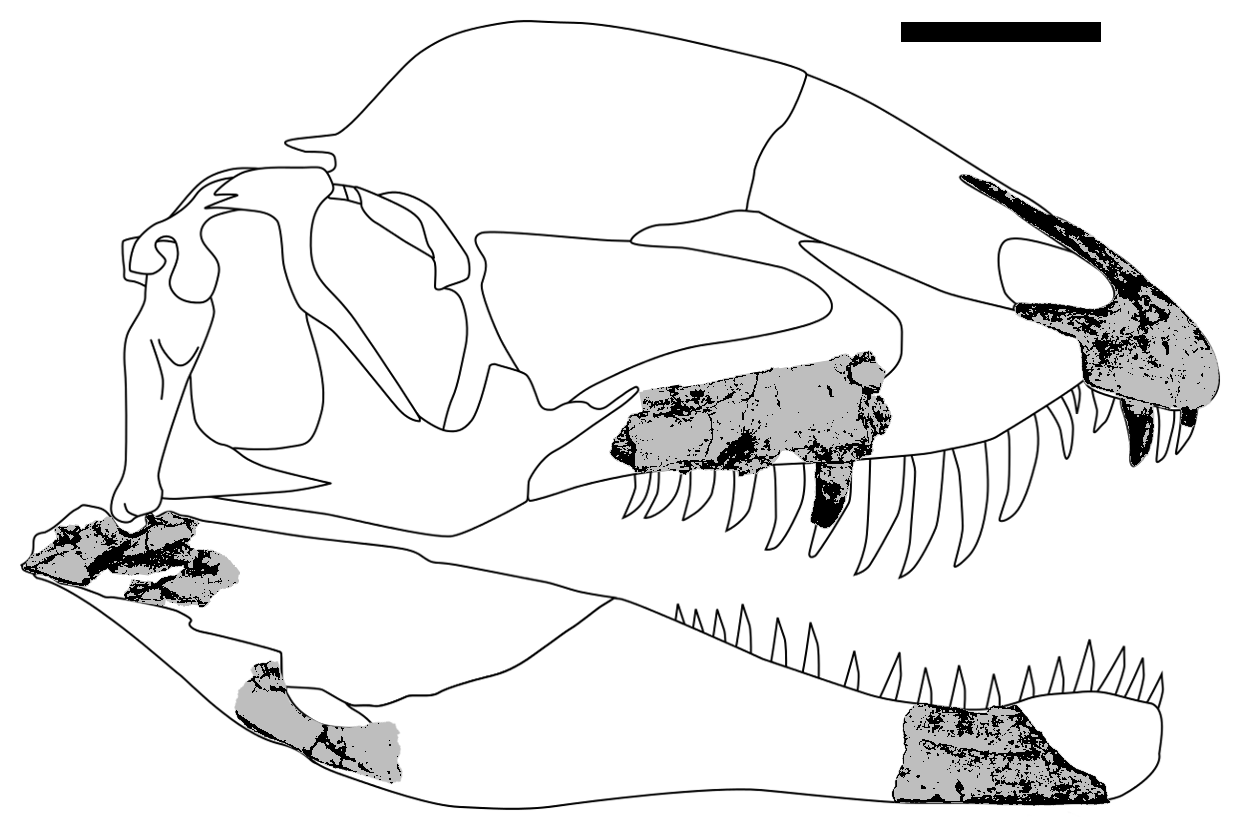|
Asfaltovenator
''Asfaltovenator'' (meaning "Cañadón Asfalto Formation hunter" after the fossil formation in which its fossils were found) is a genus of possibly allosauroid dinosaur from the Lower Jurassic (Middle Toarcian) Cañadón Asfalto Formation of Chubut Province, Argentina. The type species, type and only species is ''Asfaltovenator vialidadi''. Discovery In 2002, technician Leandro Canesa discovered a theropod skeleton roughly a mile north of Cerro Condor. Excavations started in 2005, and the fossil was removed in its entirety in 2007. It was then prepared by Mariano Caffa, a process that took five years due to the extreme hardness of the stone matrix. Between 2013 and 2015, it was compared with the specimens of related theropods. In 2019, the type species ''Asfaltovenator vialidadi'' was named and described by Oliver Walter Mischa Rauhut and Diego Pol. The generic name combines a reference to the Cañadón Asfalto Formation with the Latin word ''venator'', meaning "hunter". The sp ... [...More Info...] [...Related Items...] OR: [Wikipedia] [Google] [Baidu] |
Allosauroidea
Carnosauria is an extinct group of carnivorous theropod dinosaurs that lived during the Jurassic and Cretaceous periods. While Carnosauria was historically considered largely synonymous with Allosauroidea, some recent studies have revived Carnosauria as clade including both Allosauroidea and Megalosauroidea (which is sometimes recovered as paraphyletic with respect to Allosauroidea), and thus including the majority of non- coelurosaurian members of theropod clade Tetanurae. Other researchers have found Allosauroidea and Megalosauroidea to be unrelated groups.Cau A. (2024)A Unified Framework for Predatory Dinosaur Macroevolution Bollettino della Società Paleontologica Italiana, 63(1): 1-19. Distinctive characteristics of carnosaurs include large eye sockets, a long narrow skull and modifications of the legs and pelvis such as the thigh (femur) being longer than the shin (tibia). Carnosaurs first appeared in the Middle Jurassic around , and the last definitive carnosaur famil ... [...More Info...] [...Related Items...] OR: [Wikipedia] [Google] [Baidu] |
Carnosauria
Carnosauria is an extinct group of carnivorous theropod dinosaurs that lived during the Jurassic and Cretaceous periods. While Carnosauria was historically considered largely synonymous with Allosauroidea, some recent studies have revived Carnosauria as clade including both Allosauroidea and Megalosauroidea (which is sometimes recovered as paraphyletic with respect to Allosauroidea), and thus including the majority of non- coelurosaurian members of theropod clade Tetanurae. Other researchers have found Allosauroidea and Megalosauroidea to be unrelated groups.Cau A. (2024)A Unified Framework for Predatory Dinosaur Macroevolution Bollettino della Società Paleontologica Italiana, 63(1): 1-19. Distinctive characteristics of carnosaurs include large eye sockets, a long narrow skull and modifications of the legs and pelvis such as the thigh (femur) being longer than the shin ( tibia). Carnosaurs first appeared in the Middle Jurassic around , and the last definitive carnosau ... [...More Info...] [...Related Items...] OR: [Wikipedia] [Google] [Baidu] |
Allosauroid
Carnosauria is an extinct group of carnivorous theropod dinosaurs that lived during the Jurassic and Cretaceous periods. While Carnosauria was historically considered largely synonymous with Allosauroidea, some recent studies have revived Carnosauria as clade including both Allosauroidea and Megalosauroidea (which is sometimes recovered as paraphyletic with respect to Allosauroidea), and thus including the majority of non-coelurosaurian members of theropod clade Tetanurae. Other researchers have found Allosauroidea and Megalosauroidea to be unrelated groups.Cau A. (2024)A Unified Framework for Predatory Dinosaur Macroevolution Bollettino della Società Paleontologica Italiana, 63(1): 1-19. Distinctive characteristics of carnosaurs include large eye sockets, a long narrow skull and modifications of the legs and pelvis such as the thigh (femur) being longer than the shin (tibia). Carnosaurs first appeared in the Middle Jurassic around , and the last definitive carnosaur family ... [...More Info...] [...Related Items...] OR: [Wikipedia] [Google] [Baidu] |
Megalosauroidea
Megalosauroidea (meaning 'great/big lizard forms') is a superfamily (or clade) of tetanuran theropod dinosaurs that lived from the Middle Jurassic to the Late Cretaceous period. The group is defined as '' Megalosaurus bucklandii'' and all taxa sharing a more recent common ancestor with it than with '' Allosaurus fragilis'' or '' Passer domesticus''. Members of the group include ''Spinosaurus'', ''Megalosaurus'', and '' Torvosaurus''. They are possibly paraphyletic in nature with respect to Allosauroidea, which is to say some members of this superfamily might be closer to Allosauroids than to each other, which is undesirable in cladistics. Classification The name Spinosauroidea is sometimes used in place of Megalosauroidea. The superfamily Spinosauroidea was named in 1915 by Ernst Stromer. It is a synonym of Megalosauroidea in almost all modern phylogenetic analyses, and it is therefore redundant. Spinosauroidea was defined as a clade in 1998 by Paul Sereno as the node clade c ... [...More Info...] [...Related Items...] OR: [Wikipedia] [Google] [Baidu] |
Piatnitzkysauridae
Piatnitzkysauridae is an extinct family of megalosauroid or basal allosauroid dinosaurs. It only consists of three to four known dinosaur genera: '' Condorraptor'', '' Marshosaurus'', '' Piatnitzkysaurus and'' possibly '' Xuanhanosaurus.'' The most complete and well-known member of this family is ''Piatnitzkysaurus'', which also gives the family its name. Description So far, all known piatnitzkysaurids have only been found in Jurassic deposits of the western hemisphere/New world (however, if ''Xuanhanosaurus'' is included, this may expand their range). ''Piatnitzkysaurus'' and ''Condorraptor'' hail from the Cañadón Asfalto Formation of Argentina, which has been dated from the Toarcian epoch of the Early Jurassic to the Bathonian epoch of the Middle Jurassic (approximately 179 to 168 million years ago). ''Marshosaurus'' was found in the Morrison Formation of the United States, which was dated to the Kimmeridgian epoch of the Late Jurassic. Piatnitzkysaurids were among the fi ... [...More Info...] [...Related Items...] OR: [Wikipedia] [Google] [Baidu] |
Cañadón Asfalto Formation
The Cañadón Asfalto Formation is a geological formation from the Lower Jurassic, with doubtful layers of Late Jurassic age previously referred to it. The Cañadón Asfalto Formation is located in the Cañadón Asfalto Basin, a rift basin in the Chubut Province of northwestern Patagonia, southern Argentina. The basin started forming in the earliest Jurassic. The formation is composed of fluvial-lacustrine deposits, typically sandstones and shales with a saline paleolake carbonate evaporitic sequence of limestone in its lowest Las Chacritas Member. Interbedded with these are volcanic tuffites. It is divided into two members, the Las Chacritas Member, and the overlying Puesto Almada member, but the latter has also been assigned to the overlying Cañadón Calcáreo Formation by other authors. The exact age of the formation has been controversial, with uranium-lead dating of the volcanic tuff beds having given various different ages. Recent work has suggested that the base of the ... [...More Info...] [...Related Items...] OR: [Wikipedia] [Google] [Baidu] |
Dracovenator
''Dracovenator'' () is a genus of neotheropod dinosaur that lived approximately 201 to 199 million years ago during the early part of the Jurassic period in what is now South Africa. ''Dracovenator'' was a medium-sized, moderately built, ground-dwelling, bipedal carnivore, that could grow up to an estimated in length and in body mass. Its type specimen was based on only a partial skull that was recovered. Discovery The type material BP/1/5243 for ''Dracovenator'' was discovered at the "Upper Drumbo Farm" locality in the upper Elliot Formation which is part of the Stormberg Group in Eastern Cape Province, South Africa. It was collected by James Kitching and Regent "Lucas" Huma in sandstone that was deposited during the Hettangian stage of the Jurassic period, approximately 201 to 199 million years ago. The paratype material BP/1/5278 (originally assigned to ''Syntarsus rhodesiensis'') was discovered in 1981, also at the Elliot Formation in pinkish-maroon silty mudstone that ... [...More Info...] [...Related Items...] OR: [Wikipedia] [Google] [Baidu] |
Coelurosauria
Coelurosauria (; from Greek, meaning "hollow-tailed lizards") is the clade containing all theropod dinosaurs more closely related to birds than to carnosaurs. Coelurosauria is a subgroup of theropod dinosaurs that includes compsognathids, tyrannosauroids, ornithomimosaurs, maniraptorans, and over the recent years, megaraptorans (Although position within the clade is unclear). Maniraptora includes birds, the only known dinosaur group alive today. In the past, Coelurosauria was used to refer to all small theropods, but this classification has since been amended. Most feathered dinosaurs discovered so far have been coelurosaurs. Philip J. Currie had considered it likely and probable that all coelurosaurs were feathered. However, several skin impressions found for some members of this group show pebbly, scaly skin, indicating that feathers did not completely replace scales in all taxa. Anatomy Bodyplan The studying of anatomical traits in coelurosaurs indicates that the last c ... [...More Info...] [...Related Items...] OR: [Wikipedia] [Google] [Baidu] |
Dinosaur
Dinosaurs are a diverse group of reptiles of the clade Dinosauria. They first appeared during the Triassic Geological period, period, between 243 and 233.23 million years ago (mya), although the exact origin and timing of the #Evolutionary history, evolution of dinosaurs is a subject of active research. They became the dominant terrestrial vertebrates after the Triassic–Jurassic extinction event 201.3 mya and their dominance continued throughout the Jurassic and Cretaceous periods. The fossil record shows that birds are feathered dinosaurs, Evolution of birds, having evolved from earlier Theropoda, theropods during the Late Jurassic epoch, and are the only dinosaur lineage known to have survived the Cretaceous–Paleogene extinction event approximately 66 mya. Dinosaurs can therefore be divided into avian dinosaurs—birds—and the extinct non-avian dinosaurs, which are all dinosaurs other than birds. Dinosaurs are varied from taxonomy (biology), taxonomic, ... [...More Info...] [...Related Items...] OR: [Wikipedia] [Google] [Baidu] |







